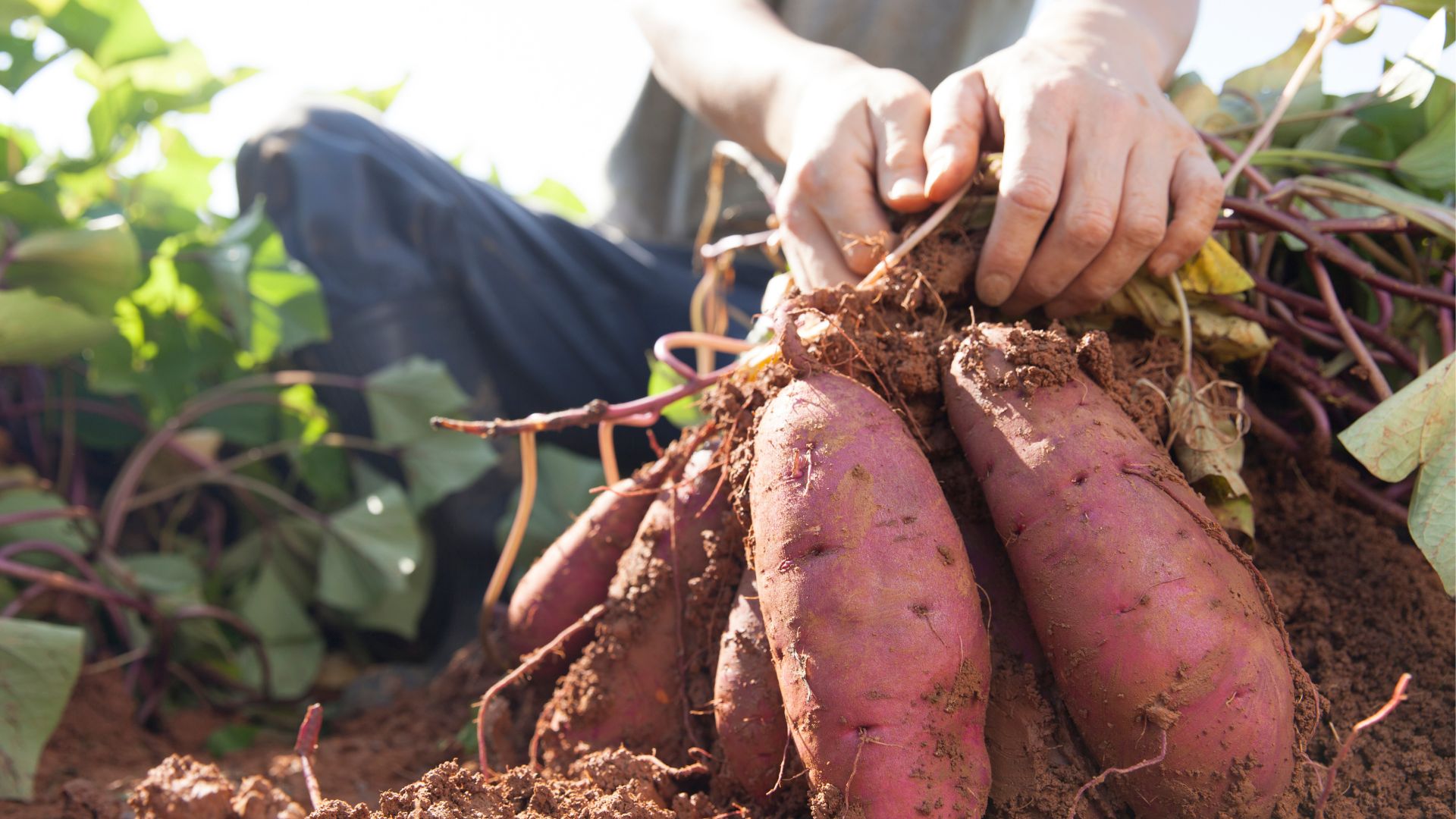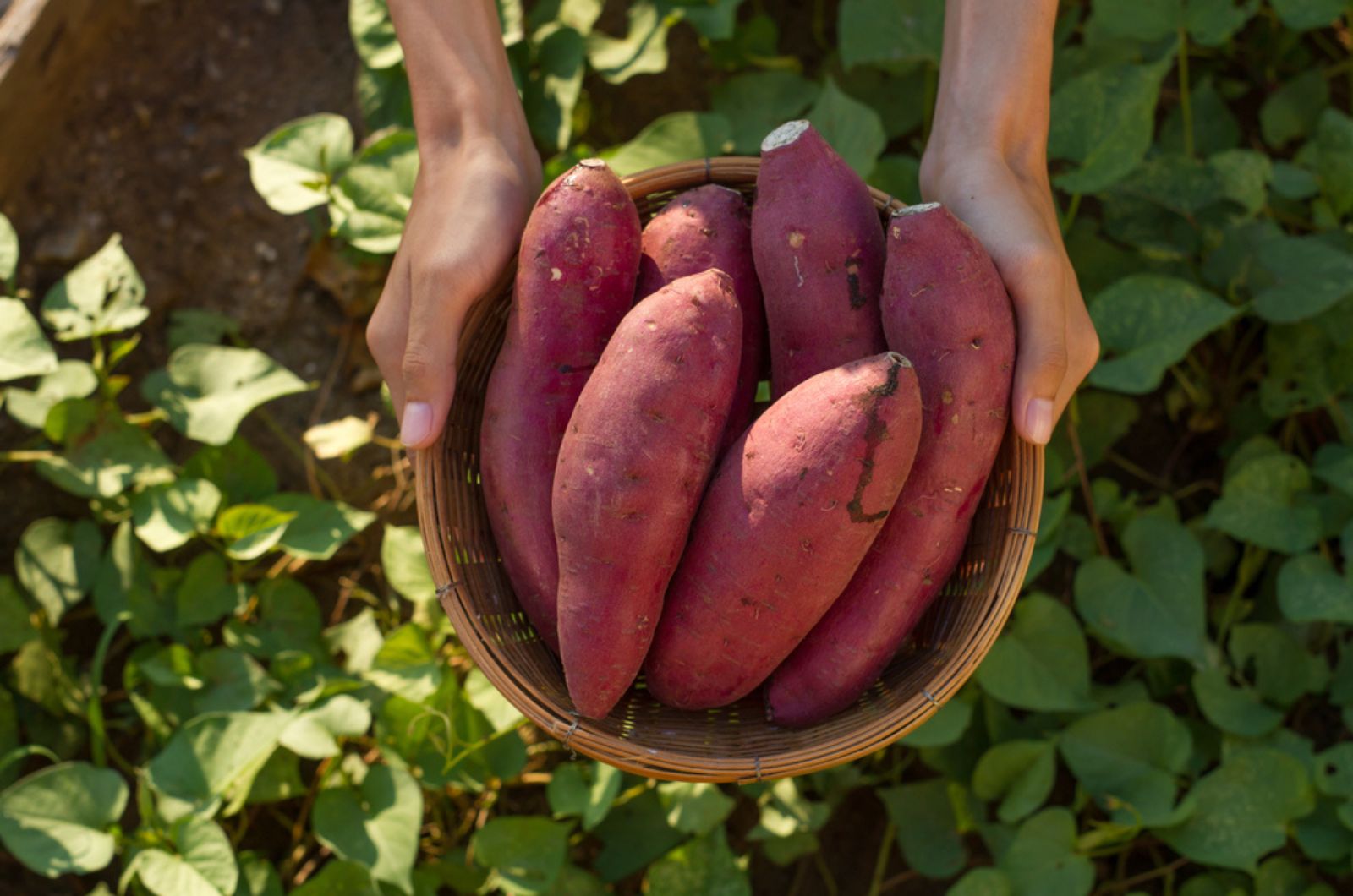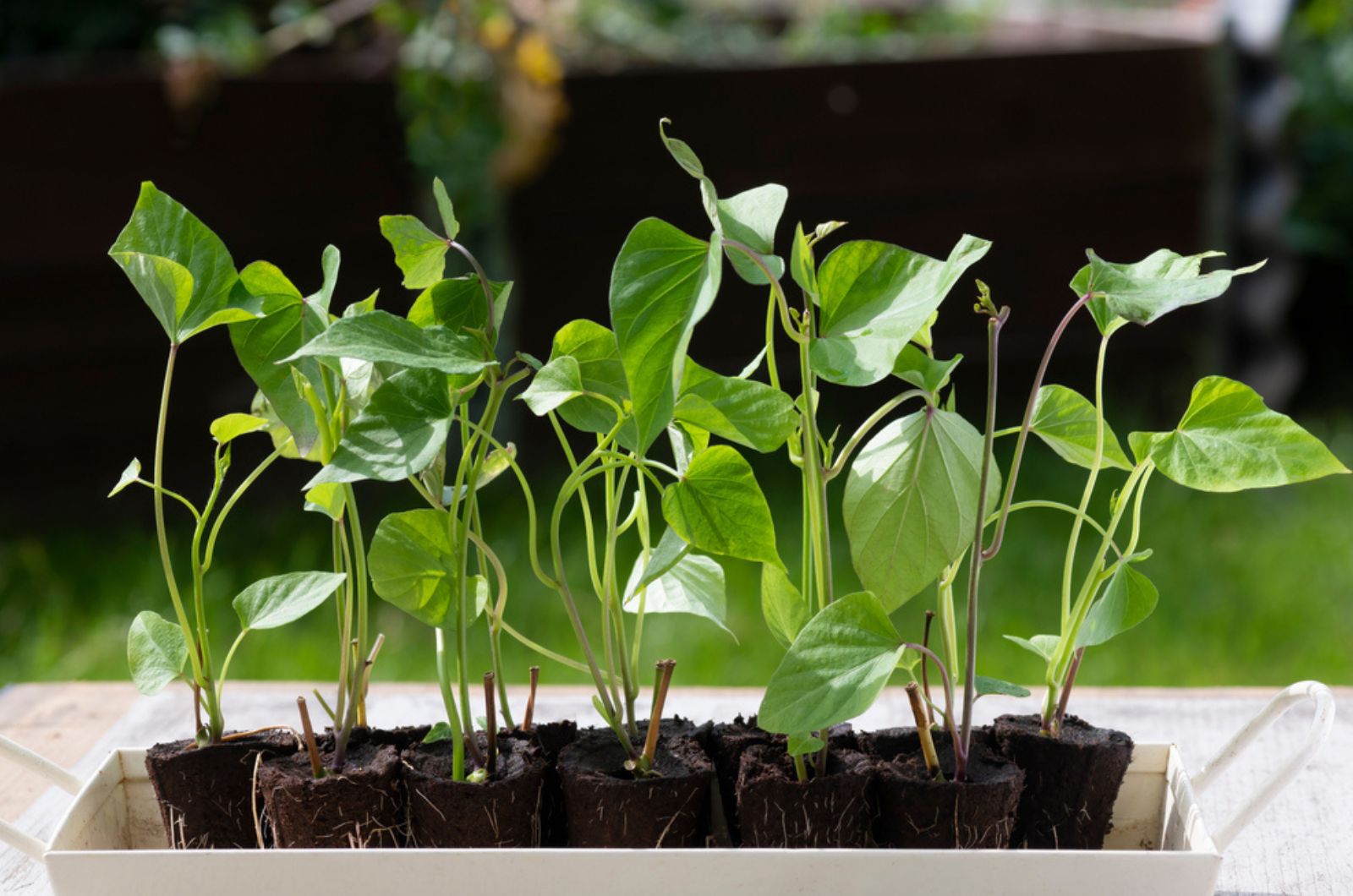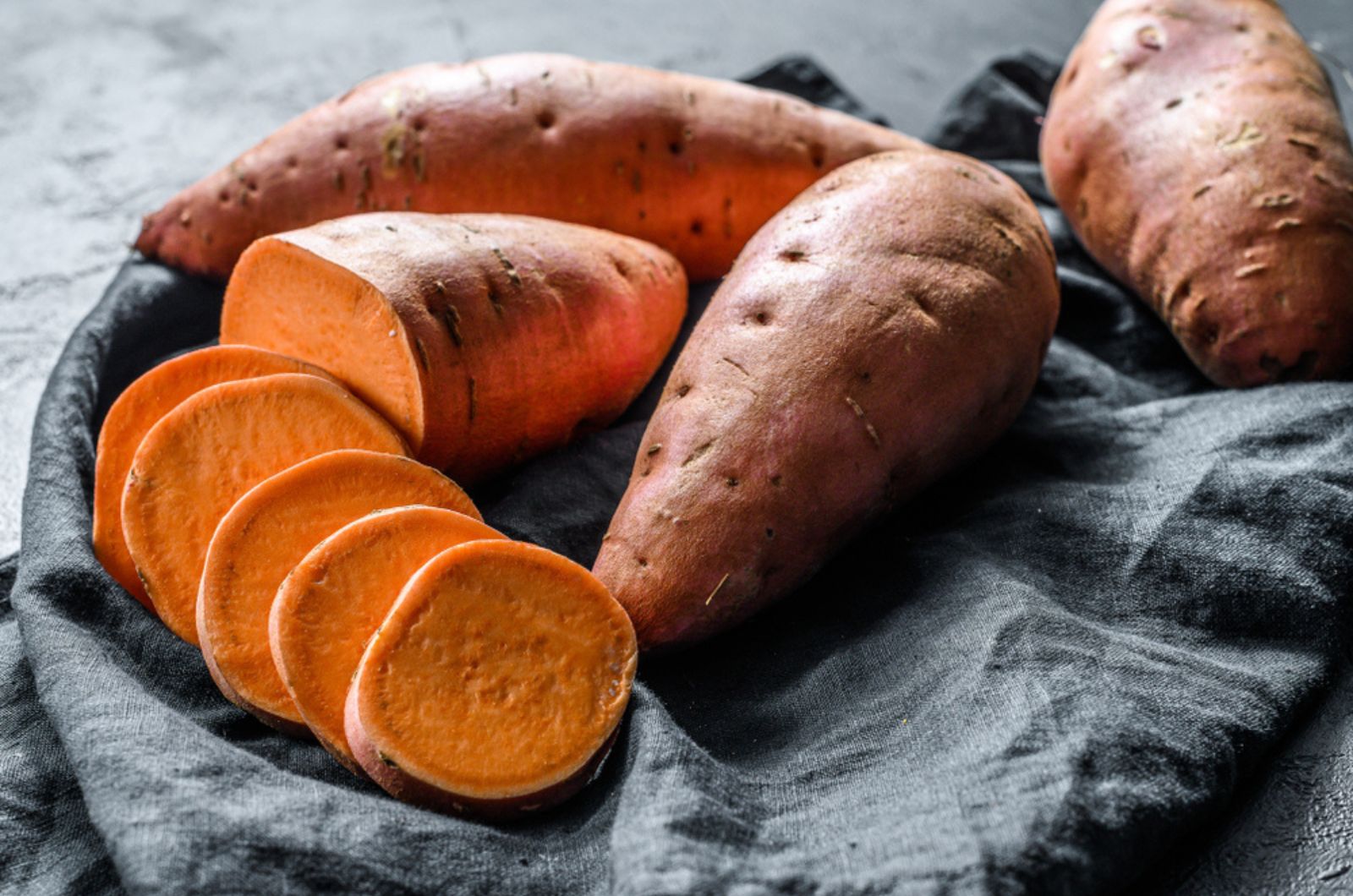Sweet potatoes are relatively easy to grow if you live in warmer climates. They are warmth-loving crops that are packed with various vitamins and minerals super beneficial for our health.
Even if you don’t live in warmer regions, you can still try and grow them – it will be a bit challenging but it is not impossible!
In this article, we are going to walk you through the essential steps to successfully grow your own sweet potatoes. Keep reading to find out how to plant sweet potatoes, where to do it, and how to properly take care of them.
Why You Should Grow Sweet Potatoes
The sweet potato, otherwise called Ipomoea batatas, is a root vegetable known for its large, tuberous roots that have a sweet taste. These plants don’t take up much space and can offer you a bountiful harvest.
They can be used in a wide range of dishes, from savory to sweet. You can enjoy them roasted, baked, mashed, or even made into fries, pies, and desserts.
Besides, these potatoes are packed with vitamins like vitamin A, C, and E, as well as dietary fiber, potassium, and antioxidants. Adding them to your diet can significantly improve your overall well-being [1].
Plus they have an impressive storage life so you don’t have to use them immediately after harvesting!
In addition, sweet potatoes are beneficial for soil health as they help break up compacted soil with their deep roots, improving overall soil structure and aeration. As they spread their long vines, they help retain moisture and suppress weed growth.
How To Plant Sweet Potatoes
Planting sweet potatoes adequately and in the right place is very important. The planting will affect their further growth and development.
In this section, we are going to cover where and how to plant sweet potatoes, and also some of the companion plants that you can plant nearby.
Choose The Right Variety
There are numerous sweet potato cultivars with different flavors, textures, and colors. However, you should always take into consideration the climate in your region when selecting a variety for growing.
For the folks that live in somewhat colder regions, you should opt for hardy ones that can tolerate coldness a bit. Some of the popular varieties include Beauregard, Centennial, Jewel, O’Henry, and Georgia Jet.
Do your research and I’m sure you will find the perfect variety for you!
Find The Perfect Place
If you live in tropical and subtropical regions, then you don’t have to worry about sweet potatoes because you can grow them almost anywhere, especially because they thrive in different soil conditions.
However, if you live in cooler climates, then you should provide them with loose, well-draining soil that is also rich in organic matter. The best soil pH levels are between 4.5 and 7. You should also provide them with some type of cover or protection so that they don’t get cold!
For these regions, growing veggies in greenhouses is the best option.
Planting Instructions
Sweet potatoes can be grown from slips, which are young plants grown from sprouts or cuttings. You can buy them in a nursery or start them indoors simply by keeping tubers in the water until they sprout.
Follow these planting instructions:
1. Prepare the soil by removing weeds, rocks, and other debris
2. Then, dig trenches or mounds that are about 8-12 inches deep and 10-12 inches wide
3. Put the slips in and leave about 12-18 inches of space between each slip
4. Gently cover the slips with soil
5. Water thoroughly
If you want to start your own slips, then check out this video: Easiest Way to Grow Lots of Sweet Potato Slips
Consider Companion Planting
One of the best potato growing tips is companion planting – by strategically growing certain plants nearby, you can protect your potatoes and improve their growth and flavor.
Plants like beans, beets, thyme, oregano, and summer savory are all good companions to your sweet potatoes. For instance, beans can fix nitrogen from the air and release it in the soil, while herbs have distinct fragrances that keep pests away.
On the other hand, you should avoid plants like corn because they are tall and provide shade that your sweet potatoes don’t enjoy. Pumpkins and squash should also be avoided because they compete for nutrients and space.
Don’t plant sweet potatoes near other root crops or members of the nightshade family, such as tomatoes and peppers, as they may compete for nutrients or be susceptible to similar diseases.
How To Care Of Sweet Potatoes
Taking care of sweet potatoes is relatively easy, especially if you live in warmer regions. As we already mentioned, you should make sure that the soil is loamy and well-draining. You can add some compost, although they generally don’t need much fertilizer.
They can grow well in dry conditions but sweet potatoes grow much better if the soil is kept evenly moist. Water them regularly, aiming for about 1 inch of water per week. Be mindful not to overwater, as excessive moisture can lead to rotting.
To prevent the mature tubers from splitting, stop watering approximately one month before harvesting.
You can also apply a layer of organic mulch to suppress weed growth and regulate soil temperature. Lifting vines to remove leaves can keep them from establishing roots, which will only lead to competing for the main root section.
Be on the lookout for pests like sweet potato weevils, aphids, and whiteflies. In case your potato plants get infested, you can handpick them or use insecticidal soap.
Also practice crop rotation to prevent disease and avoid planting sweet potatoes in the same place year after year.
How To Harvest Sweet Potatoes
These root vegetables usually take about 90 to 120 days to mature after planting.You will notice that the vines start to yellow and die back, which is usually a sign that sweet potatoes are ready for harvesting.
However, you can harvest them earlier for small potatoes or wait until the tubers have reached their full maturity for larger storage potatoes. Don’t let them sit in the soil for too long or they will start rotting.
Be extremely careful when digging out the tubers. Use either a garden fork or a shovel and start digging around the base of the plant. Lift the plants gently from the soil, shake off any excess soil, and separate the tubers from the vines.
Storing And Using Sweet Potatoes
Before storing your potatoes, they need to be cured in order to extend their storage life and improve the flavor. All you have to do is leave them in the sun for a day and then place them in a humid place for a couple of weeks.
Once cured, store sweet potatoes in a cool, dry, and dark place. A basement, cellar, or pantry are suitable locations. Don’t refrigerate sweet potatoes because cold temperatures can negatively affect their flavor and texture.
Then, you can use them whenever you want – these veggies can be either roasted, boiled, baked, mashed, or used in soups, stews, pies, casseroles, and many other dishes!
Here are some delicious sweet potato recipes:
• Mediterranean Baked Sweet Potatoes
• Oven Roasted Sweet Potato Fries
• Garlic Parmesan Roasted Sweet Potatoes
You can get creative in the kitchen and try out various meals. So, if you live in a warmer region and have enough garden space, you should definitely consider growing sweet potatoes!
References:1. Bjarnadottir A. (2023). Sweet Potatoes 101: Nutrition Facts and Health Benefits. Healthline





